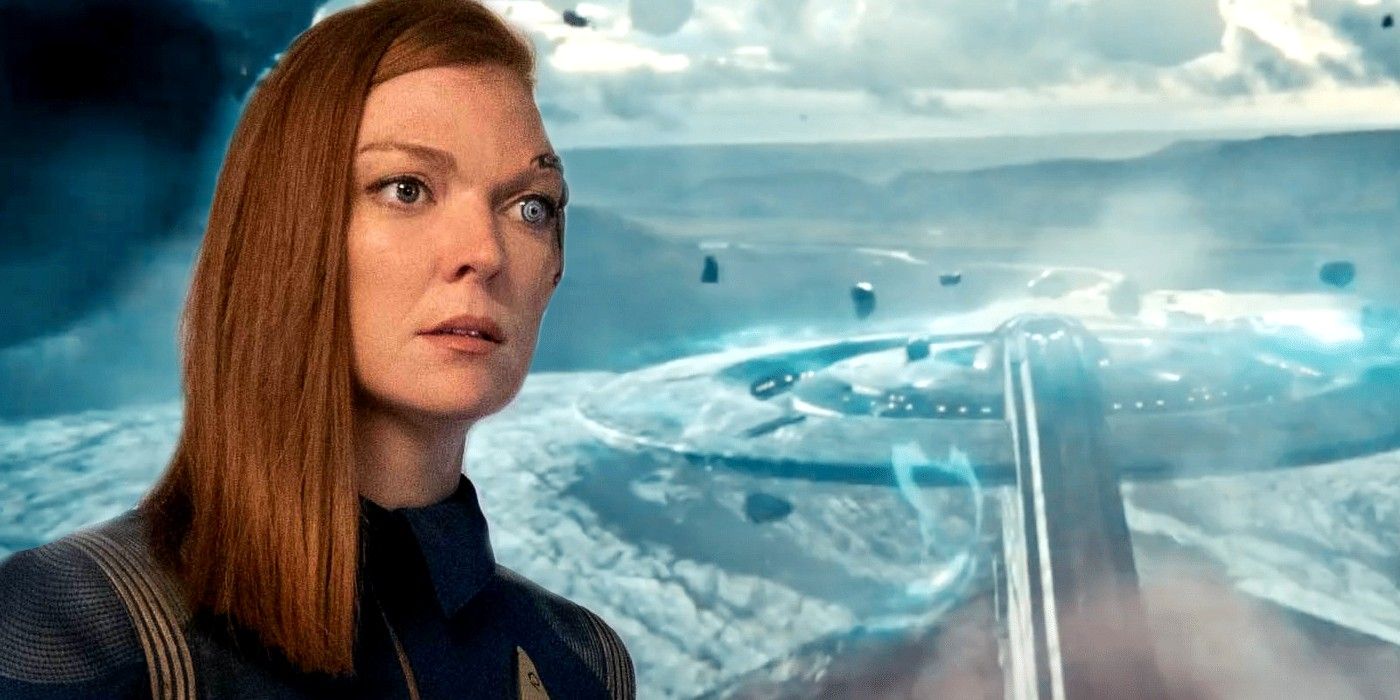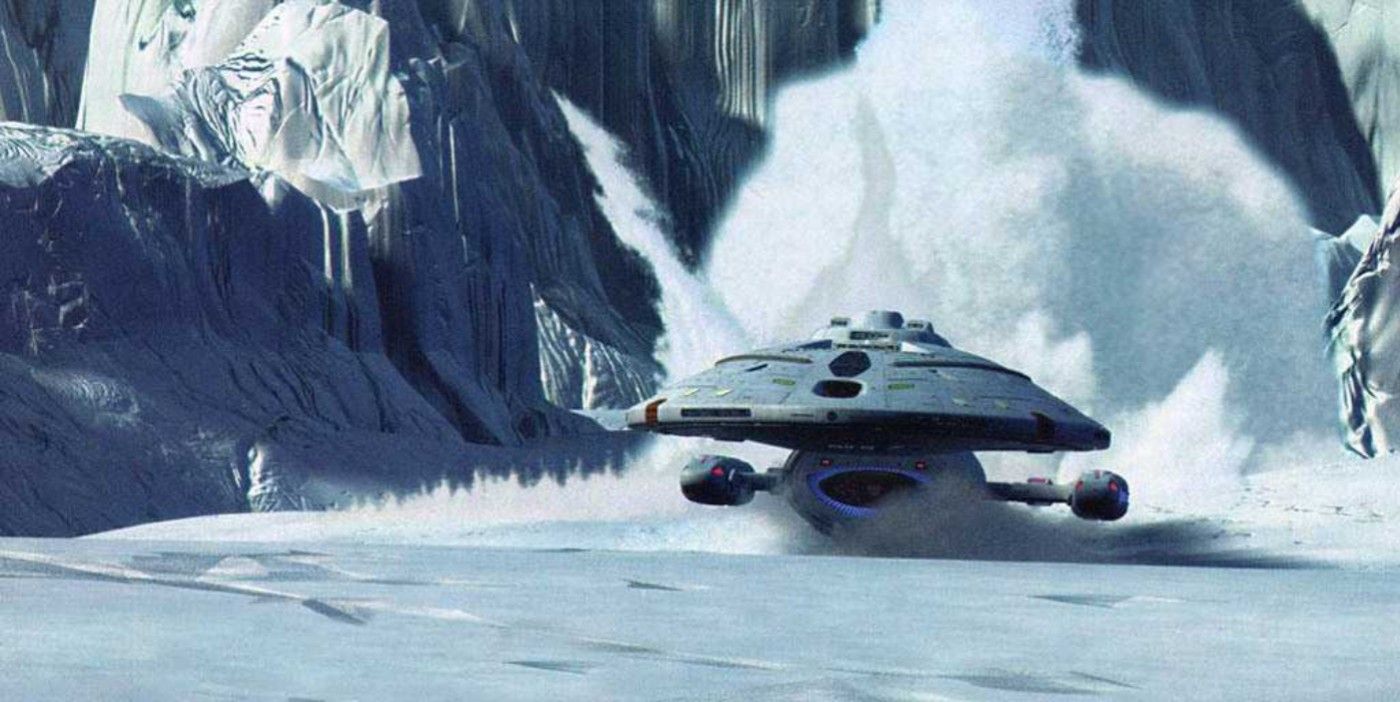How did the Discovery survive a nasty crash onto an ice planet in Star Trek: Discovery, but the Voyager failed to pull-off a similar stunt? Star Trek: Discovery season 3 began with Michael Burnham arriving in the future, but while she departed the 23rd century with the Discovery following close behind, her ship is nowhere to be found. Desperately searching for her crew, Burnham is forced to align with the enigmatic Cleveland "Book" Booker and the remaining dregs of the Federation. Episode 2 catches up with the Discovery, which skids into the future one year later than Burnham in her Red Angel suit. Like Burnham, the Discovery has somehow missed Terralysium. Saru and the gang instead crash-land on an unnamed icy planet, but survive the ordeal and get their ship up and running before the end credits.
The Discovery's chilly landing is eerily similar (perhaps even acting as a homage) to Star Trek: Voyager season 5's "Timeless." In this episode, Voyager attempts to ride a slipstream back to the Alpha Quadrant, relying on the engineering and mathematics skills of Harry Kim to lead the way. While Harry and Chakotay survive in the Flyer, the Voyager itself falls out of the slipstream and crashes onto an icy planet below, killing everyone on board. Harry is forced to flout the laws of time travel to erase the entire, sorry ordeal.
It's certainly odd that two similar-looking crashes have markedly different results. The Discovery and Voyager both fall off-course violently (from a wormhole and quantum slipstream, respectively) and lose control in space, before falling through a planet's atmospheres onto the ice surface below. If anything, the Voyager's crash appears less severe than Discovery's, and being the more modern ship, should theoretically hold up better, but there are several possible reasons why the Discovery crew survived while the Voyager's perished.
The main reason behind the Voyager's destruction is the ship's loss of inertial dampers. This fictional Star Trek tech essentially explains why a ship's crew can stand and move around while a vessel is in warp. Without those dampers, things would get bloody. In "Timeless," Tom Paris makes a point of yelling "inertial dampers offline" before the Voyager begins its descent. While the Discovery was only barely online, no one reported a failure of inertial dampers, which gave the ship and her crew a far better chance of surviving the crash.
There are several other notable differences between the Discovery and Voyager crashes that might've also contributed towards the latter's destruction. In Star Trek: Discovery, Lieutenant Detmer executed a "thermal roll" maneuver, ensuring the ship landed on a thick patch of ice. The Discovery also had enough juice to engage deflector shields before impact, while firing phasers just before landing helped carve up the waiting ice. When all is said and done, Detmer earns a hearty round of applause for her sterling work, suggesting she pulled off a minor miracle. Clearly, she was paying more attention at Starfleet academy than Tom Paris.
The Voyager performed precisely none of these actions during its own ice incident. Captain Janeway orders Paris to reverse thrusters, but to no avail. Unlike the Discovery, Tuvok announces Voyager's deflector shields are down, meaning the ship is forced to helplessly career into the ice without any way of softening the blow. The Discovery's survival in Star Trek: Discovery season 3 can be attributed to a combination of functional inertial dampers, working deflector shields, and the individual skill of a pilot, where the Voyager was left with few options due to the damage she'd already taken.


